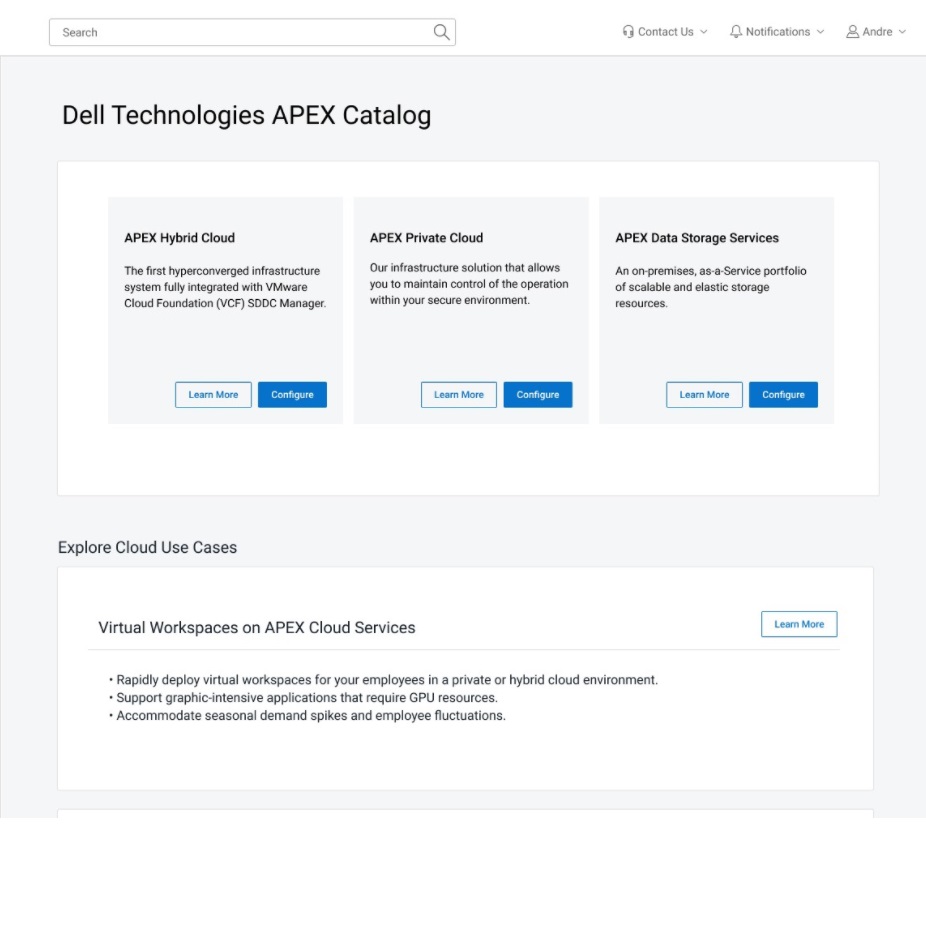-
-
-
Enterprises today are turning to cloud edge computing to better manage and process the vast amount of data being generated by edge devices. By shifting processing away from centralized data centers to edge locations, enterprises can significantly reduce latency, increase bandwidth, improve reliability and reduce costs.
But as IT teams add cloud edge computing resources to their portfolio of cloud infrastructure, the task of managing multiple clouds becomes unwieldy. When seeking solutions to manage cloud edge computing and multicloud infrastructure more easily, more enterprises today turn to solutions from Dell Technologies.
-
-
-
-
The amount of data produced at the edge of networks today is growing exponentially. From new technologies like Internet of Things (IoT) and self-driving cars to existing technologies like cell phones, laptops and gaming systems; the sheer volume of data that edge devices are producing is threatening to halt bandwidth, increase latency, limit reliability and significantly add to costs.
The problem lies in where all this data is getting processed. Sending vast amounts of data from edge devices to centralized data centers and back again — often multiple times — is an extremely inefficient and costly way to process critical data. By decentralizing processing and relocating it to the edge of the network, enterprises can create a cloud edge computing solution that allows edge devices to respond faster while consuming less bandwidth and reducing costs.
While cloud edge computing holds enormous promise for increasing computing power, it raises serious management issues for IT teams. Adding cloud edge computing to public cloud and private cloud resources means that IT teams are required to juggle an ever-greater number of enterprise cloud platforms, each with its own set of tools and processes. The result is a kind of management chaos that can only result in higher costs, greater complexity and limitations in agility, speed and innovation.
What’s needed is a better way to manage multicloud solutions by unifying them in a hybrid cloud architecture with a single management plane and a common set of tools, infrastructure and operations. That’s where Dell Technologies can help.
-
-
-
-
As a leading cloud company, Dell Technologies provides cloud infrastructure solutions that simplify operations and improve cloud economics by providing a consistent management experience across all public, private and edge clouds. Dell Technologies Cloud is a suite of cloud solutions and services for running traditional or cloud-native applications across a multicloud environment.
With the ability to easily move workloads between the cloud and cloud infrastructure, enterprises can manage cloud edge computing and other public and private cloud resources. Take advantage of new technologies like real-time cloud analytics, serverless computing, AI, machine learning, blockchain, containers and other cloud-based applications.
-
-
-
-
Dell Technologies Cloud includes:
- VMware Cloud Foundation on VxRail. The foundation of Dell Technologies Cloud is a platform engineered by Dell Technologies. VMware Cloud Foundation (VCF) on VxRail runs, manages, automates and secures application portfolios across multiple clouds, working with a complete portfolio of storage, data protection and consulting and deployment and financial services.
- Dell Technologies Cloud Validated Designs. This solution provides best-of-breed Dell Technologies infrastructure delivered as pre-tested infrastructure with extensive deployment guidance.
- Data Center-as-a-Service. Delivered as a fully managed, subscription-based service, this offering brings the simplicity and agility of the public cloud to data center and cloud edge computing locations.
- Partners. Support for all major cloud providers — including Amazon Web Services, Microsoft Azure, Google Cloud Platform and more than 4,200 additional cloud partners — makes it easy to extend a seamless hybrid cloud experience.
-
-
-
-
With Dell Technologies Cloud, IT teams can manage edge cloud resources and other cloud infrastructure more easily, enabling them to:
- Improve workload mobility with familiar tools and models that reduce errors and improve efficiency.
- Simplify operations across all cloud environments with a common set of tools and consistent infrastructure that drive efficiency, eliminate silos and improve agility.
- Optimize costs with flexible hybrid pricing models that allow IT teams to choose the optimal mix of public, private and edge cloud resources for lower and more predictable costs.
- Accelerate innovation with access to the right resources at the right time, enabling faster speed-to-market.
- Reduce risk by giving administrators a single operational hub from which to manage public, private and cloud edge computing.
-
-
-
-
What is cloud edge computing?
Cloud edge computing is the practice of moving responsibility for data processing away from centralized data centers to clients and devices from the edge of the network. Rather than requiring edge devices to send raw data back to data centers for processing, an edge cloud architecture keeps the responsibility for processing data within the edge devices, creating a vast network of processors that can rival the power of very large data centers.
What are the benefits of edge computing?
By allowing edge devices to process the data they need, edge clouds can significantly reduce latency and provide a higher quality experience on devices like cell phones, laptops, IoT devices, gaming systems and self-driving cars. Edge computing can also reduce costs by eliminating the need to transmit large amounts of data from the edge of the network to centralized data centers, freeing up bandwidth for other purposes.
-
-
-

APEX Flex on Demand
Acquire the technology you need to support your changing business with APEX Flex on Demand. Achieve payments that scale to match your actual usage.
-

Cloud Education Services
Dell Technologies Education services provide cloud training solutions designed to empower your workers and improve IT experiences.
-

Cloud Use Cases
Access the right mix of technology to adapt at speed and unleash exciting new use cases that power your intelligent enterprise.
-



